This popular, welcoming herb is commonly enjoyed in households. However, although you may be familiar with the various types of basil found in your nearby supermarket, there are several similar-looking herbs that can easily deceive you.
Let’s look at 9 plants that look surprisingly like basil before looking at tips on how to identify the real deal, plus a rundown of some tasty common basil varieties.
1. Mint
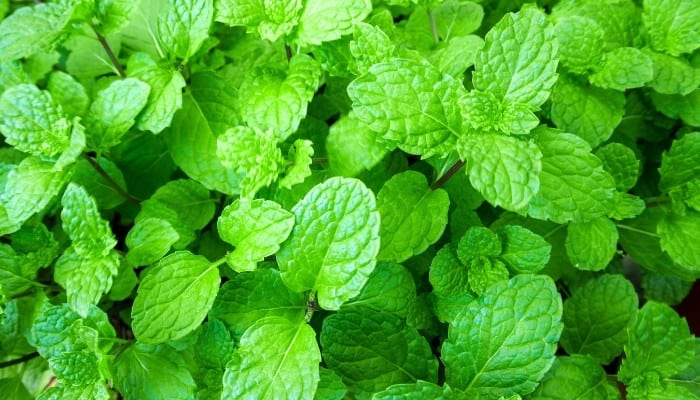
Plants in the mint family have erect, branching square stems covered in oval-shaped leaves with pointed tips. Mint leaves often have serrated edges and a puckered, embossed texture on the surface, depending on the variety.
Like basil, mint has leaves arranged in opposite pairs in a spreading rosette formation. Some varieties, such as wild mint, also have smooth, rounded leaves resembling basil quite closely.
Because basil is part of the mint family, it’s easy to see why these two are often confused.
2. Chickweed
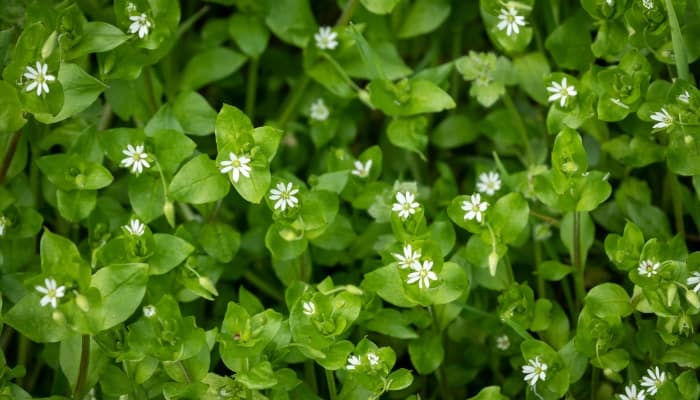
Chickweed plants grow on rounded stems and have broad spade-shaped leaves of dark green with faint veining on the surface.
This plant grows to almost the same height as basil at 18 inches tall and has a similar leaf shape and arrangement, if slightly more spaced out, than basil leaf pairings.
3. Spinach
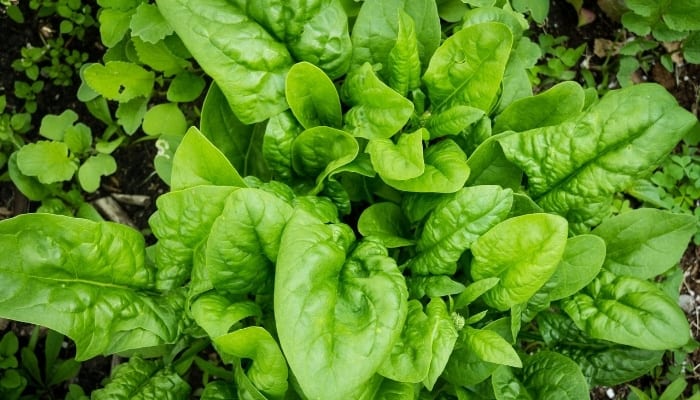
Perhaps one of the closest dead ringers for basil on the list, spinach has broad, rounded leaves of a similar deep green color with the familiar vein detail. Like basil, spinach leaves are also curved and slightly cupped.
Spinach plants also produce cone-shaped flower clusters (though green instead of basil’s purple/white), and the leaves are arranged in a similar rosette pattern. At first glance, it can be hard to tell spinach and basil apart, especially during early growth.
4. Nettle
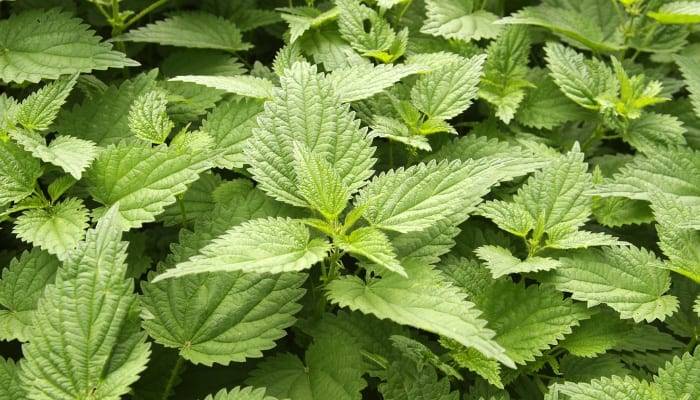
Often considered a weed, nettles have bright green leaf pairings with their characteristic saw-toothed edges and a subtle covering of white hairs on the surface.
Like basil, nettle leaves have a rounded oval shape with a pointed tip at the end and obvious vein detail, though they can grow much taller than basil with some types reaching 4 feet!
5. Lemon Balm
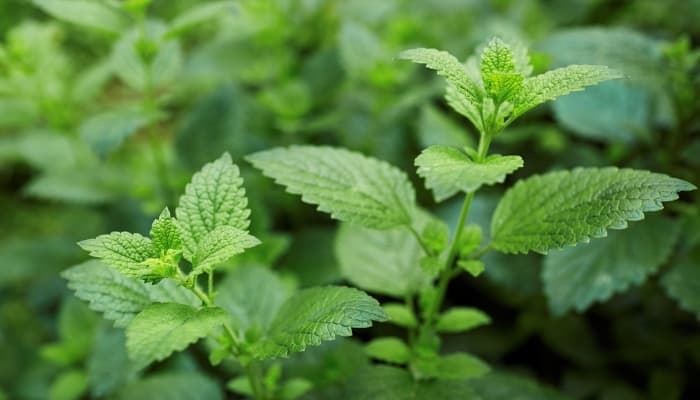
Lemon balm resembles a cross between mint and basil with its puckered and highly textured lush green leaves that have a narrow, lance shape, pointed tip, and softly jagged edges.
This lemon-scented plant grows slightly taller than basil at 36 inches and possesses similar cone-shaped white flowers but in bright purple.
6. Perilla
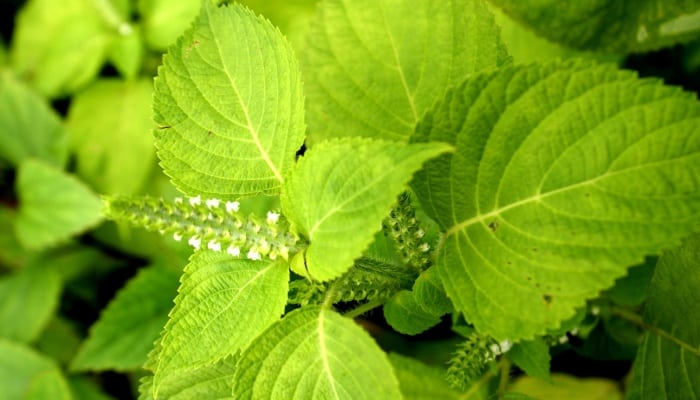
This bushy plant has broad, spade-shaped leaves with prominent vein details and grows to 20-24 inches tall. This flowering plant also produces white tubular flowers at the top of the stems.
As with some basil types, perilla plants also come in variegated reddish and purple varieties, and the leaves are usually arranged in a similar rosette cluster.
7. Coleus
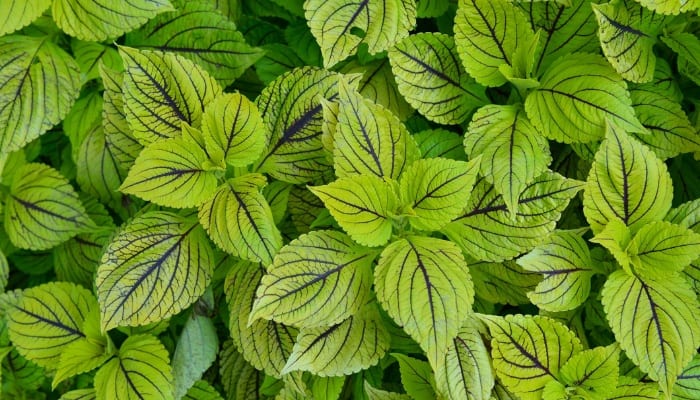
Coleus is a bushy and compact non-flowering plant that comes in various exciting color palettes and patterns ranging from orange and coral to burgundy and deep purple!
The shape, texture, and growth habit of coleus is similar to basil. Both have distinctive square stems and opposite leaf pairings in clumps of broad and pointed quilt-like leaves.
8. Nicotiana
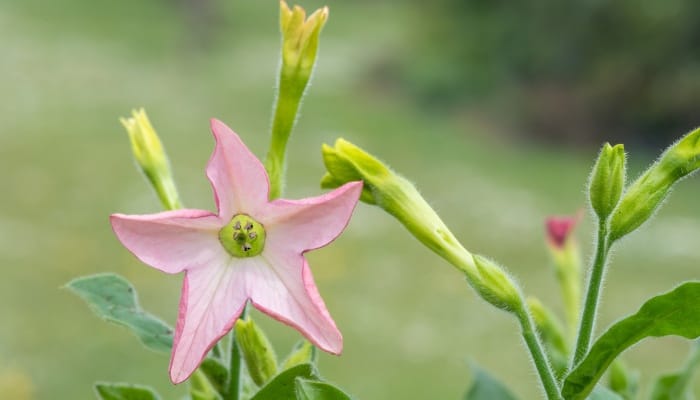
Also known as the tobacco plant, nicotiana produces large, slightly crinkled deep-green leaves that each measure up to 1 foot long at maturity. Plants can reach up to 6 feet tall overall.
As young plants, nicotiana appear as a close cousin of basil with their smooth leaf edges and notable vein detail.
A helpful way to tell them apart is that the nicotiana flowers are elongated and tubular with star-shaped blooms at the tip.
9. Calamint
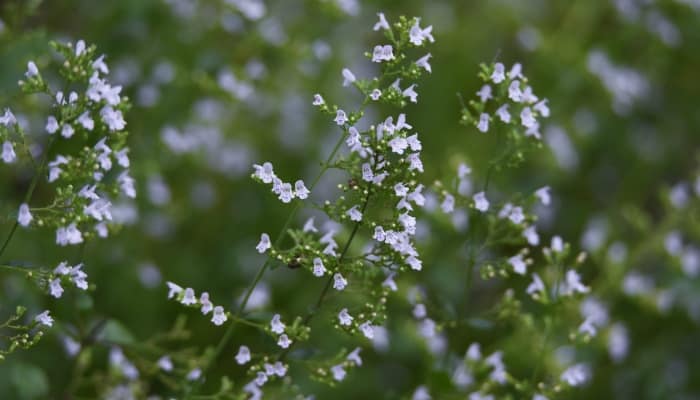
Calamint grows on a mound of broad and rounded grayish-green foliage that resembles oregano leaves.
The main similarity to basil plants is the dainty calamint flowers that grow in very familiar spike/cone clusters at the tips of the stems. These mini blooms come in pink, red, purple, and white (the latter two colors match the colors of basil flowers).
How To Identify Basil
With 9 plants sharing so many traits of the basil plant, how are you supposed to tell the real deal from the basil doppelgangers?
As confusing as it may seem, there are definite characteristics that can help you spot the difference — the information below is all you need to help you identify a basil plant and distinguish it from look-alikes.
Basil Leaves
- Typically measure between 1 and 4½ inches long and ½ to 2½ inches wide.
- Elongated oval shape with a pointed tip.
- Leaves grow close and compact in opposite pairs, covering all sides of the stem.
- Glossy texture.
- Faintly puckered surface.
- Leaves curve or “cup” down (towards the ground).
- Colors are commonly chartreuse and deep green but can be shades of purple, red, and burgundy.
- Leaves have a faint aroma of anise, clove, or lemon peel, depending on the variety.
Basil Flowers
- Flowering normally occurs from July to August.
- Flowers typically come in white or pinkish-lavender/magenta shades.
- Long spikes or spires dotted alternately with small tubular blooms, each measuring 10-20 mm.
Basil Stems
- Square-shaped (becoming more prominent with age) with a slightly hairy, downy texture.
- Stems are woody close to the ground with a yellowish-brown hue that is indicative of its thick and vigorous tap root system.
- Typically green in color but can be purple on Thai and Dark Opal basil varieties.
- Stems measure between 12 and 50 inches long, depending on the variety.
Basil Growth Pattern
- Bushy, outward-spreading habit.
- Will typically grow between 10 and 18 inches tall with a similar spread, but larger leaved basil varieties like ‘Sweet’ and ‘Lettuce Leaf’ grow up to 3 feet.
- Dwarf basil types generally remain under 1 foot tall and wide.
Common Basil Varieties
Did you know that there are around 150 different varieties of basil?
To begin with, let’s look at some of the most popular varieties out there from the common sweetly aromatic basil you might find on pizza to more colorful and zingy flavors ideal for exciting culinary creations!
Sweet Basil
Common sweet basil has smooth, rounded, and deeply cupped bright green leaves. This aromatic plant has a sweet warming taste with subtle peppery, mint-like hints that make this a gorgeous pairing with pasta and tomato dishes.
Genovese Basil
Very similar in appearance to sweet basil, Genovese has slightly darker green leaves with a noticeable puckering and more glossy texture. This basil carries an aroma of clove and mint and is often used in pesto dishes – yum!
Purple Basil
If you want to add dramatic color to your herb garden, purple basil is the way to go! Varieties like ‘Crimson King’ and ‘Dark Opal’ carry deep burgundy and plum-bluish tones, almost with a metallic sheen.
Purple basil also has vigorous growth and a stronger clove taste compared to its green counterparts.
Spicy Globe Basil
A dwarf variety that packs a punch, this is a tightly clumping basil ideal for indoor basil growing or container gardens that produces dainty but strong and spicy chartreuse-green leaves. These make great additions to soups and salads!
Thai Basil
Thai basil has narrow saw-toothed-edged leaves with faded purple edges and purple stems. This is not to be confused with Thai Sweet basil, which produces a central globe of dark purple flower heads above light-green leaves.
This colorful variety has an equally colorful flavor with hints of anise and licorice, and as its name suggests, it pairs beautifully with Thai food dishes.
Holy Basil
This plant’s one handy herb! Considered a sacred plant in Hinduism due to its representation of the goddess Tulsi on earth, holy basil is also cherished for its medicinal uses to treat stomach ailments and blood circulation issues.
Holy basil has a slightly spicy and musky aroma and is often enjoyed in Indian cuisine.
Lemon Basil
Lemon basil produces light green and smooth, matte leaves with faint vein detailing. While it has an anise-like scent on the stem, it has a wonderfully fresh lemony scent when crushed. As you can imagine, it pairs equally well with savory dishes, desserts, and teas!
Lettuce Leaf Basil
A large bushy variety that could almost have you confused for its veggie namesake, lettuce leaf basil has giant crinkled leaves reminiscent of lettuce in light green that measure up to 10 inches long and 4 inches wide!
Like lettuce, this basil has a milder flavor compared to most basil varieties, making it a versatile pick to include in recipes from wraps and salads to fish and vegetable dishes.
Cinnamon Basil
This is a warm and slightly spicy basil with reddish-purple stems that produce pink flowers. Its zingy cinnamon-like flavor pairs equally as well in marinades and fried rice dishes as it does in chutney and fruit pie recipes!
Final Thoughts on Basil Types and Their Look-Alikes
As we’ve discovered, there are many basil look-alikes, from plants with similar leaf textures and shapes to plants with near identical stems and flower types. Hopefully, you now know how to identify true basil using the above guide.
The basil plant family alone includes so much variety in terms of flavors, colors, and textures, making this a wonderful herb to grow in the yard or on your kitchen windowsill.
Just be sure to remove flower buds as they appear on your basil plant as this herb becomes bitter if left to flower.
